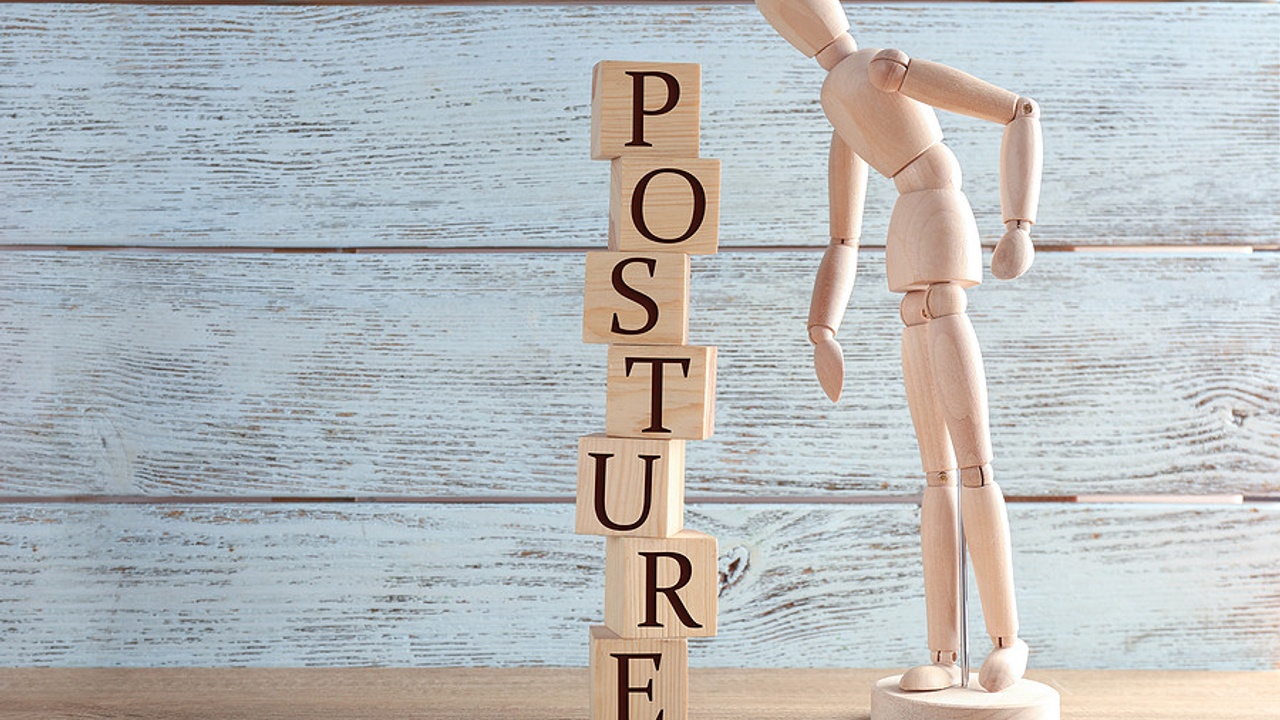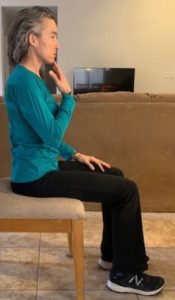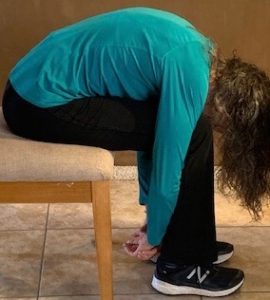7 Easy Posture Tweaks
Apr 30, 2019
Having pain-free, aligned posture doesn’t have to be hard. The following seven tweaks will start you on your way.

1. Stand at the wall
Since the wall provides a template of correct posture where all your load-bearing joints— ankles, knees, hips and shoulders—are aligned, this is a great way to assess your posture. When standing at the wall, your heels, butt, and upper back should contact the wall. If you feel like you are going to fall forward, then move your heels out slightly. When you do this, your head might or might not touch the wall, depending on your upper back position. Either way, don’t force it back by overextending your neck. Instead, be sure to keep your chin parallel to the ground.
It's also important to realize that changing posture not only requires moving the bones, but also includes a shift in your nervous system and brain. When you stand in alignment against the wall, it works on your proprioception—awareness of your body position in space and relationship of your joints to each other. In other words, the brain learns a new orientation for your body. At first, it may feel wrong because your brain thinks that your standard position, which is not aligned, is straight. However, over time, your brain will recognize this new position as correct. It’ll then feel “wrong” in your old posture.
2. Straighten your feet
How your feet are positioned affects all the joints above. A foot that is turned out affects your whole leg, turning out your knee and hip. When your hip is turned out, this moves your pelvis. The pelvis is the base of support for your upper body. If your upper body does not have a solid foundation, it can quickly become misaligned and the muscles strained in response to the constant downward pressure of gravity. Moving the toes inline with the heels realigns your hips, allowing the body to load through the joints as it should and spares the soft tissues from becoming overly tight from holding you up.
3. Point your thumbs forward
With your arms hanging relaxed at your sides notice your hand position. If the back of your hands are facing forward with your palms toward your thighs this indicates a forward rounding in your upper back and shoulders. Take a moment to roll your shoulders back and reposition your scapula. You may feel some tension develop around your shoulder blades as these muscles turn on to straighten your posture. Look down at your hands again, and you should see that your thumbs are now pointing forward.

4. Tuck your chin
When sitting at the computer we often become absorbed in our work. I notice that when I’m deep in concentration I move my head forward toward the screen despite wearing appropriate glasses. This small movement extends my neck and brings my whole upper body forward into a rounded posture. This can also happen when I’m intently listening to someone. Tucking the chin in lengthens my neck and brings my head and upper body back into a more neutral position.
If you really need to get closer to your screen, instead of moving forward from your chin, hinge from your hips. This way you will maintain correct spine posture. Just don’t stay here too long, because you will soon begin to compensate and round forward.
5. Stay grounded in your heels and sits bones
Your body and brain need reference points (areas of contact) for proper alignment. Heels and sits bones (bones on the bottom of your pelvis) are important reference points. If the brain does not sense these, compensations in position and movement can happen.
When sitting feel if both your sits bones are equally contacting the surface below. Crossing your legs makes even contact with the sits bones difficult and also tilts the pelvis sideways—don’t do it!
My husband often comes up behind me in the kitchen and lightly press my heel down to the ground. I love to be on my toes! Another bad habit is crossing my leg back with only my toes touching when seated. Even though your feet are not weight bearing when seated, the brain is monitoring and needs to sense contact with the heels. Keep them down!
6. Breathe from your diaphragm
Fortunately, breathing is automatic. However, because we don’t need to focus on our breathing we often fall into poor patterns, which affect our position. We breathe approximately 20,000 times a day. With each breath we are ingraining a good or bad posture.
Stress breathing is common. It involves breathing into the upper lungs and lifting the chest on inhalation. In this pattern, each time we take air in, we are essentially doing a shoulder shrug, increasing the tension on the top of the shoulders with each inhalation.
Diaphragm breathing occurs lower in the torso. The respiratory diaphragm is located at the bottom of the rib cage, separating the lungs from the organs below. The diaphragm encircles the body, extending to the front, back and both sides.

Most of us are good at breathing into the front of our torso. One at a time, focus on breathing into your back, then sides. One way to learn to breathe into your back is to drape yourself over your knees to compress the front of your body. Eventually, you will be able to coordinate breathing in all three directions.
7. Release muscle tension
When I started doing body scans recently—where you slowly go through the body checking for tension in each area—I was surprised at how much unnecessary tension I found. We are often not aware of how we are holding our bodies doing our daily activities. In the kitchen, I frequently press my husband’s shoulders down when he’s cutting veggies.
Become aware of the positions you use most often and see if you can reduce the tension. I often coach people on this with sitting. Many times, when learning to sit correctly there is too much tension through the lumbar spine that can be released with a subtle relaxation of the lower back.
We want to use the least effort possible in our everyday movements
Stay connected with news and updates!
Join our mailing list to receive the latest news and updates from me.
Don't worry, your information will not be shared.
We hate SPAM. We will never sell your information, for any reason.

